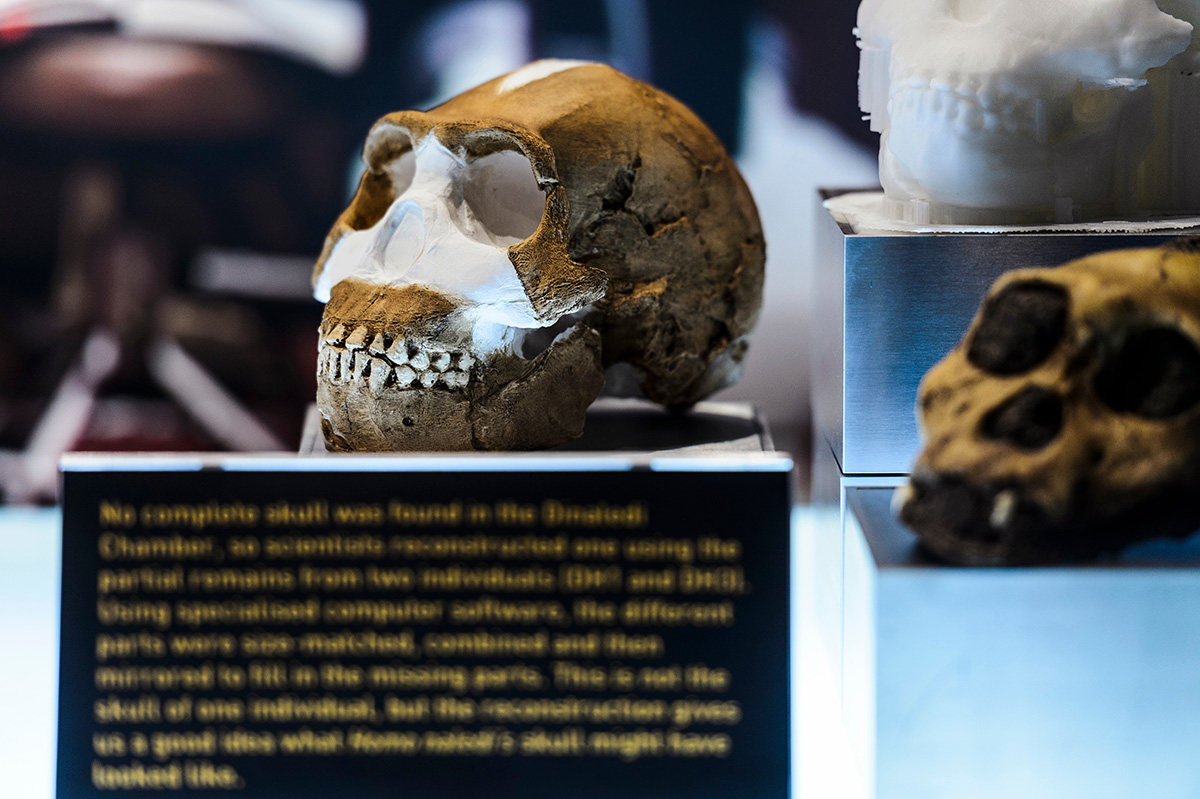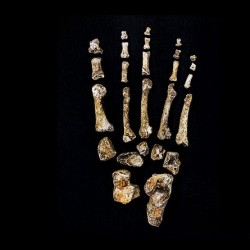Earliest Evidence of Last Rites
New UW findings show that human ancestors intentionally buried their dead.
New excavations in South African caves have suggested that members of the species Homo naledi, an early human ancestor, intentionally buried their dead and made engravings in the cave walls nearby.
Fossils of Homo naledi were first discovered in these caves 10 years ago by a team of scientists that included Professor John Hawks and other UW–Madison researchers. If confirmed, their new findings are the earliest evidence of mortuary and meaning-making behaviors in human ancestors. Previously, scholars have believed that the mental capacity behind complex cultural behaviors like burial required a larger brain, like those of Neanderthals and Homo sapiens. Homo naledi’s brain was only about one-third the size of a modern human’s.
“It’s not how big your brain is, it’s how you use it and what it’s structured for,” says Hawks.
To show these burials were intentional, the geology team compared layers of sediment at the burial sites to adjacent spots of the cave floor. They found that the layers under the remains of Homo naledi were disturbed, rather than uniformly distributed as in the rest of the cave floor. This, Hawks says, suggests that the individual didn’t just lie down there and die. While the papers don’t currently have enough evidence to satisfy peer reviewers, Hawks and the team are working to provide further data and methodology.
UW–Madison researchers have been excavating at the site for years. They expect to publish additional work soon, and Hawks is excited about the opportunity to shed further light on human evolution.
Published in the Winter 2023 issue




Comments
No comments posted yet.